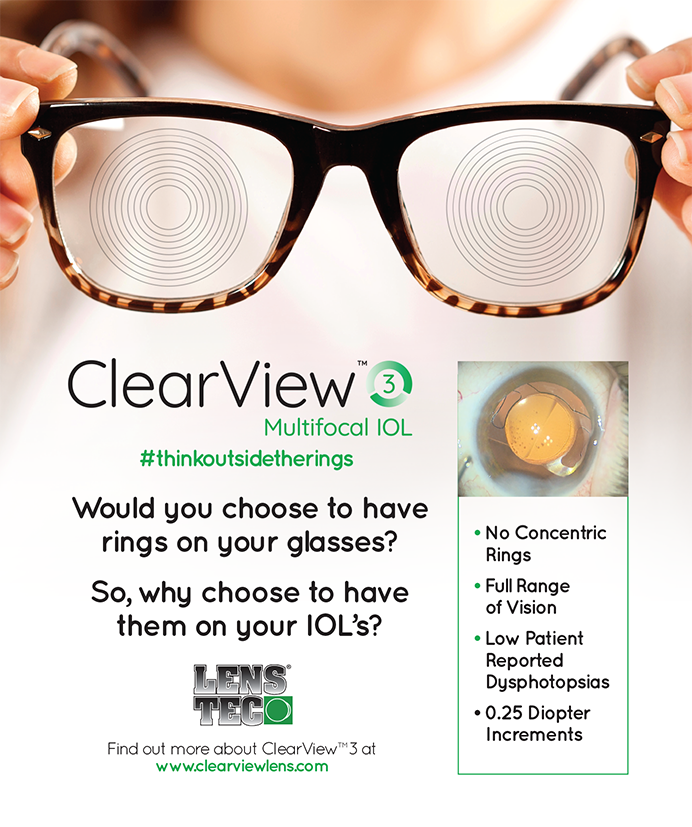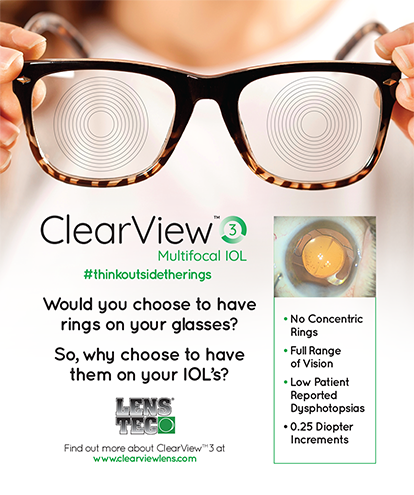In late 1999, IntraLase Corp. (now owned by Advanced Medical Optics, Inc., Santa Ana, CA) obtained a 510k clearance for its beta 6-kHz femtosecond laser to create LASIK flaps.1,2 The power of subsequent models increased to generation 1 (10 kHz),3,4 generation 2 (15 kHz),5 generation 3 (30 kHz),6,7 generation 4 (60 kHz)8 and, in April 2008, the current generation 5 (150 kHz). Presently, more than 900 IntraLase FS lasers (Advanced Medical Optics, Inc.) are in service worldwide, and ophthalmologists have used the technology for more than 2 million procedures (data on file with Advanced Medical Optics, Inc.).
Naturally, other companies have developed competing technology.9 The success of femtosecond lasers can be attributed to their improvement on microkeratome-based technology for creating LASIK flaps as well as their utility for other corneal procedures.
This article focuses on some of the considerations inherent in choosing which femtosecond laser is best for your practice.
COMPARING THE LASERS
Overview
There are four femtosecond lasers available in the US, the IntraLase FS, the Femtec (20/10 Perfect Vision AG, Heidelberg, Germany), the Femto LDV (Zeimer Ophthalmic Systems Group, Port, Switzerland), and the VisuMax femtosecond laser system (Carl Zeiss Meditec, Inc., Dublin, CA). Although surgeons including myself obviously have far less experience with the three more recently released femtosecond lasers than the IntraLase FS laser, I believe that all four platforms are capable of performing as they were intended. The cost of the lasers and each procedure appears to be similar. The choice of machine therefore depends upon its hardware, software, and capabilities. With the help of David Tabould, MD; Melvin Saryaba, MD; and Marcus Blum, MD, I designed Table 1 to compare the femtosecond technologies and included some of the categories recently published by Lubatschowski.9
Speed
The key question is how long each laser will take to create a 9-mm–diameter LASIK flap from start to the completion of the side cut? The time required to create a 9-mm–diameter flap can vary from 10 to 40 seconds, depending on the femtosecond laser.
Intraoperative Control
A laser's output is another important consideration. Can you place the hinge in any quadrant, and can you determine the angle and length of the hinge via software control? Can you dial in the flap's desired diameter without worrying about the impact of preoperative corneal curvature (steeper corneas create larger flaps with mechanical microkeratomes)? Can you select a corneal thickness at the computer, or are your choices limited based on the laser's delivery system? In some cases, the flap's diameter depends on the corneal thickness when a curved applanation lens is used. Can you view the procedure as it is actually being performed in the event that you need to stop (for instance, in the event of a vertical gas breakthrough or suction loss), or are you viewing a computer simulation of the procedure that will not show you if a complication has occurred?
Other issues to consider are whether you will be able to abandon the procedure (prior to creating the side cut) if there is a break in suction and whether halting the surgery will impact the eye's prescription? A femtosecond laser that creates the side cut first or during the raster pass disturbs Bowman's layer and automatically changes the refractive error of the eye.
Can you modify the side cut's architecture in terms of the spot and line separation and the angle of your side cut at the computer, or is the angle fixed? Can you use the computer to change the centration of the procedure once you have connected the femtosecond laser to the eye? Is the connecting process (docking) between the femtosecond laser and the patient's eye done mechanically or automatically? Does it require a solution that is placed on the surface of the cornea to aid in the coupling of the laser to the eye? Is the laser able to move in the x, y, and z planes, or must you move the patient or the patient's bed to obtain the docking between the laser and the eye?
Corneal Flaps
One of the exciting aspects of femtosecond laser technology is its ability to create a flap of uniform thickness. Published studies have demonstrated that a LASIK flap of consistent thickness induces fewer higher-order aberrations compared to the meniscus-shaped flaps created by mechanical microkeratomes.10-12 In addition, the energy used to create the side cut also augments peripheral wound healing compared with side cuts made by a mechanical microkeratome. Traumatic dislocations of the flap are thus less likely, and epithelial ingrowth at the interface is less frequent than with mechanical microkeratomes. One femtosecond laser utilizes a side-cut architecture similar to that of mechanical microkeratomes so that differences in side-cut architecture can impact clinical outcomes.
Another benefit of femtosecond laser technology is that you can measure the thickness of the flap before lifting it.13 In addition to having the ability to create LASIK flaps, with some femtosecond lasers surgeons are also capable of performing corneal transplants, intracorneal ring segment channels, astigmatic keratotomy, corneal biopsies, and other procedures.14-16
Postoperative Results
The unexpected complications of creating a LASIK flap with a femtosecond laser include the presence of bubbles in the anterior chamber, transient light sensitivity syndrome, the vertical breakthrough of gas, the formation of an opaque layer of bubbles, and inflammation of the peripheral interface.17-19 I believe that the incidence of these problems decreases as surgeons gain experience and as the total energy that is delivered to the eye is reduced. These complications do not have any permanent impact on visual or refractive outcomes. Moreover, the development of faster laser engines will result in the delivery of less total energy to the eye, which will further decrease some of these side effects. Regarding the opaque bubble layer, for example, surgeons have learned that decreasing the compression of the cornea during the docking process, as well as modifying the spot and line separation and raster energy, decreases the amount of the opaque bubbles. If a laser creates a side cut first, this provides a site of egress of gas, which reduces the likelihood of an opaque layer of bubbles. A lower incidence and density of the opaque layer of bubbles may not be a common entity with one femtosecond laser technology that creates a side cut at the time of the raster pass. By severing Bowman's layer, however, one impacts the refractive error of the eye. Luckily, the opaque bubble layer has no impact on visual or refractive outcomes; at worst, it can inhibit some iris tracking devices on excimer lasers until the bubbles are absorbed.
CONCLUSION
Your choice of a femtosecond laser may be different if you wish to use the technology solely to create LASIK flaps rather than to perform numerous procedures or if your practice requires mobility of the femtosecond laser from room to room. If your practice's staff implants intracorneal ring segments or performs corneal transplants, then you may prefer a femtosecond laser with multiple capabilities. Having four and probably more femtosecond lasers to choose from allows refractive surgeons to select a platform that meets their needs. Multiple femtosecond platforms strongly suggests that this exciting technology is becoming the standard of care for the creation of LASIK flaps and corneal surgery.
Perry S. Binder, MS, MD, practices at the Gordon Binder & Weiss Vision Institute in San Diego. He is a paid consultant to Advanced Medical Optics, Inc. Dr. Binder may be reached at (858) 455-6800; garrett23@aol.com.


